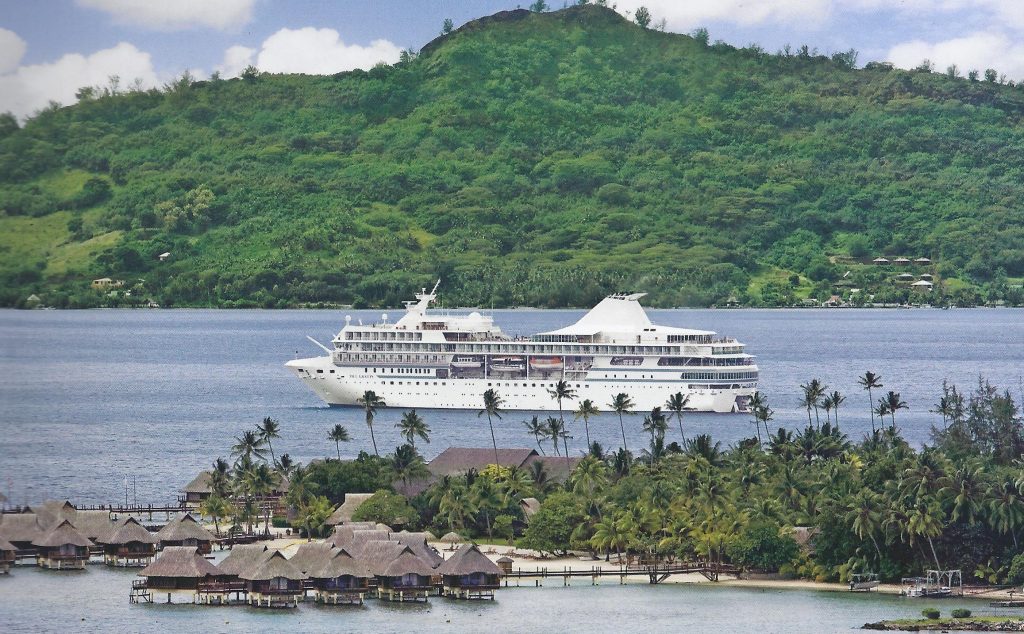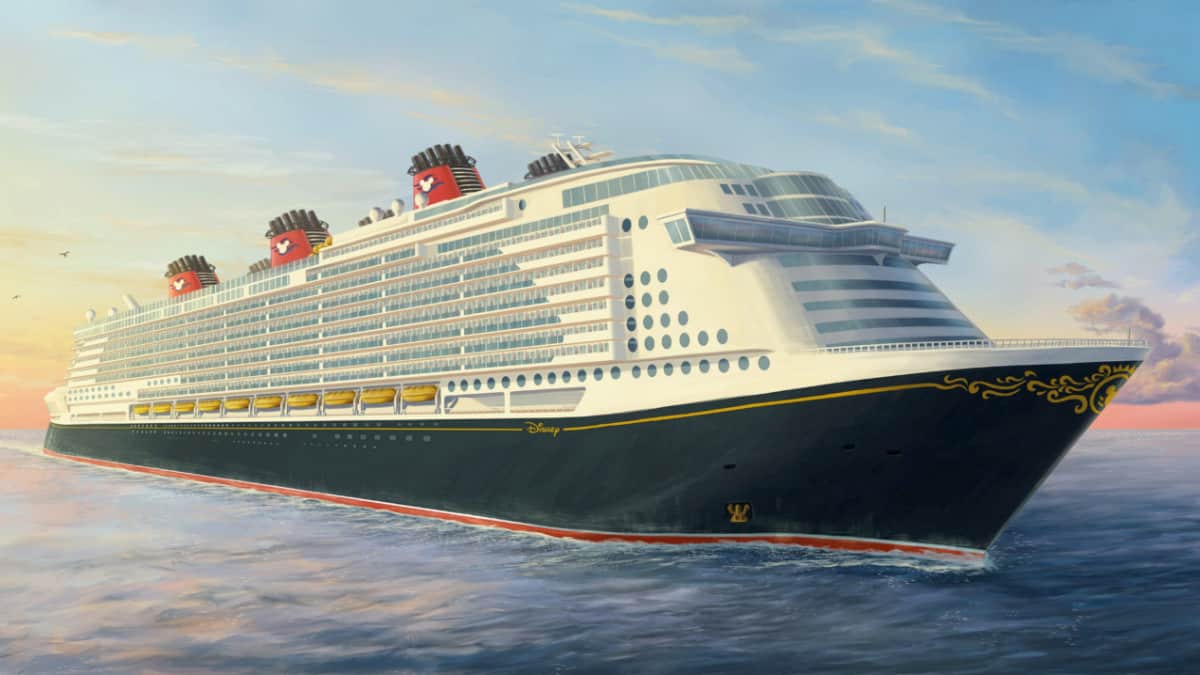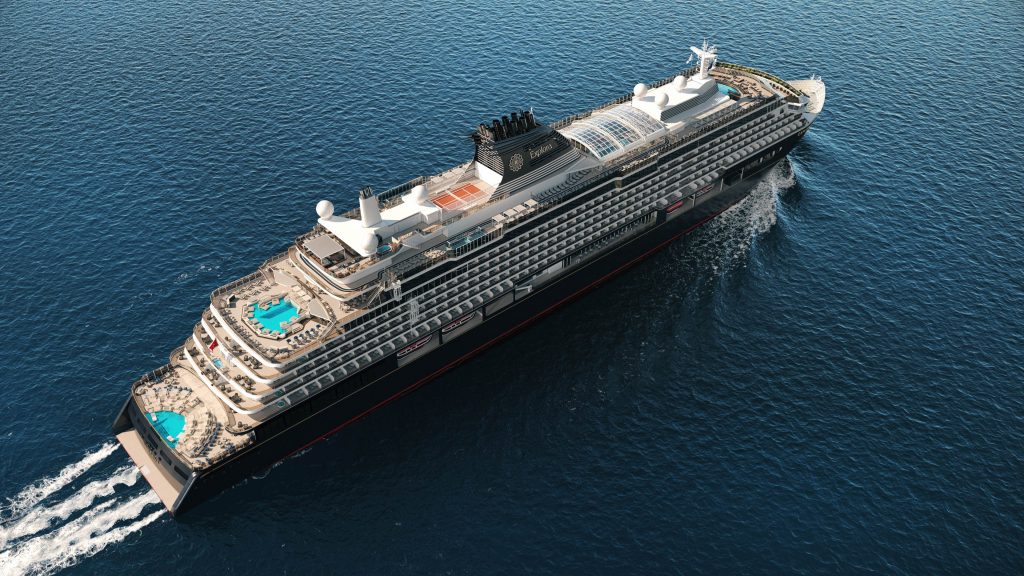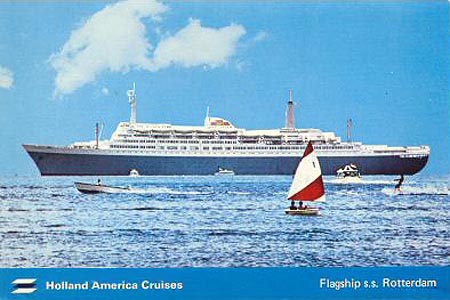With a project named Tahiti Nui, French shipowner Service et Transports (ST) planned to build a cruise ship based in Tahiti in the 1990’s. A decade earlier, ST had already ordered two large sail-cruisers, from Ateliers et Chantiers du Havre (ACH) which were operated from the start by Club Med as Club Med 1 and sister ship Club Med 2 ( my article on her here). These 187 meters long, 5-masted vessels were not a great success financially, but ST still decided to expand further in the cruise trade by starting negotiations with ACH for a small cruise vessel with a length of just 150 meters and a capacity for 300 guests based at French Polynesia.
In March 1994 government subsidy was secured which was not only granted to support ST, but also to help ACH, one of France’s smaller shipyards to secure additional much needed work. However, at the time ACH also received a much larger order for three chemical tankers to be built for a Norwegian client. Because of a lack of capacity, ST was forced to shift the cruise ship order to St. Nazaire based Chantiers de l’Atlantique so the government subsidy was now transferred to a large shipbuilder. Finally, in October 1995, the final contract with Chantiers de l’Atlantique was signed and construction started on November 27 the first metal was cut in the presence of Jean Marc Poyle, CEO of ST and the prime minister of Tahiti Gaston Flosse.
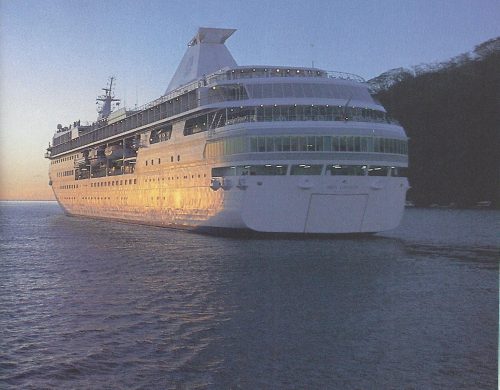
In February 1997 general agent of ST in Europe, Compagnie des Croisieres announced that Paul Gauguin as she would be named would be marketed and operated (mainly hotel services) by Radisson Seven Seas Cruises (RSSC), not only because of their knowledge of running luxury hotels but also because of their network within the US. Many future passengers would originate from the west coast of the US from where it only takes a six hour flight to reach Tahiti. Paul Gauguin’s interiors had been designed with American guests in mind, combined of course with the French style luxury and cuisine. It took two years to build Paul Gauguin during which Chantiers de l’Atlantique tested new construction methods, one of them the use of prefabricated blocks to improve efficiency. Of course Paul Gauguin, being a smaller vessel, was an ideal vessel to try out these improved building techniques.
Unfortunately, during sea trials vibrations and technical problems with her stabilizers resulted in ST refusing their newbuilding. Chantiers de l’Atlantique now turned to ACH, whose technicians were responsible for the design of her stabilizers. Finally, on December 3, Paul Gauguin quietly left her builders yard and headed for Florida where she was christened by godmother Carole Poyle.


She then departed on her first cruise via the Panama Canal to Papeete, Tahiti, her homeport where she started her weekly cruise service on January 31, 1998.
Five years later, in 2003, ST ended its activities and Paul Gauguin was sold to a Swiss insurance firm. RSSC stayed on to operate and market her. In the next years Paul Gauguin changed hands several times, for the first time in 2005 to a consortium consisting of Grand Circle Travel and Vantage Travel. In 2009 ownership of Paul Gauguin changed yet again, this time to Pacific Beachcomber, owner of five luxury hotels in the Polynesian region. RSSC owners Apollo management had also attempted to acquire Paul Gauguin, but they did not want to exclude the option of operating her outside the South Pacific region, resulting in objections of local Polynesian authorities. She was now operated by newly formed Paul Gauguin Cruises. This lasted until 2019 when French Cruise line Ponant Cruises, owned by the Artemis holding if the Pinault family. They reverted her to the French flag again, after having been reflagged by former owners Beachcomber to the Bahama’s.


In 2012 Paul Gauguin had been refurbished for 7 million dollars. In that same year, she was rated one of the world’s top ten small cruise ships. Although now owned by Ponant, Paul Gauguin Shipping Ltd and its brand Paul Gauguin cruises was kept as a separate entity, retaining its own management.
Ponant refurbished her thoroughly in 2021, which meant technical improvements as well as upgrading her interior spaces with new carpets, furniture and the addition of local traditional artwork. Also her staterooms were redecorated. Paul Gauguin has 160 cabins for max. 352 guests which are located on 5 of her 7 passenger decks, 80 of these are balcony cabins. 9 suites are her most luxurious accommodations. Apart from her Grand Salon. La Palette Lounge, Piano Bar, Casino and Casino Bar, Bar du Soleil, Internet Café, Captain’s Reception Lounge and Fare Tahiti art gallery and library, Paul Gauguin features 3 restaurants: her main dining room L’Eetoile, the buffet-style La Veranda restaurant and the Grill, a poolside food bar. With a crew to passenger ration of 1 – 1,5 and a space ration of 58 to 1 she rates as among adding most luxurious, spacious ships in her class.

During her 7, 10 and 14-day cruises around the isles of Tahiti and French Polynesia where she sails year round (currently the only passenger vessel to do so), waterports activities are possible in every port she visits. Using the ship’s retractable marina platform guests can lose themselves in snorkeling or scuba diving. Many of the ship’s crew are local Tahitians, proud to show off their unique native grounds while adding a friendly informal atmosphere to Paul Gauguin’s cruises
In 2019, owners Ponant announced two newbuildings had been ordered from the Fincantieri/ Vard shipyards due for delivery in 2022 with an option for a third ship for their Paul Gauguin-brand. They would be 11,000 gross tons having a capacity of app. 230 passengers. Because of the pandemic and uncertanties following it within the cruise industry, two years later Ponant reported these vessels had been delayed indefinitely.

